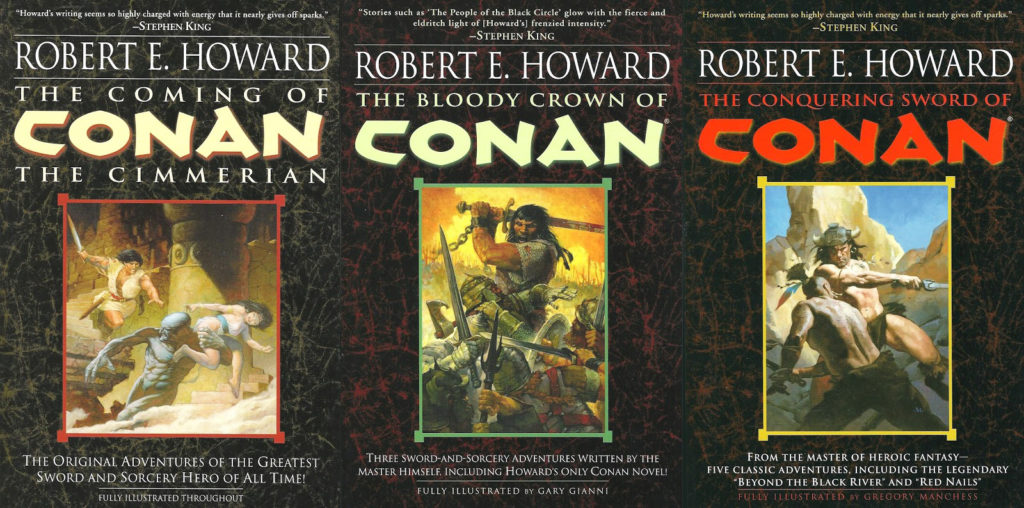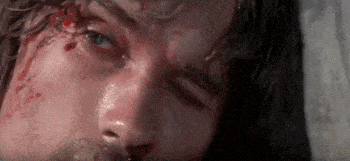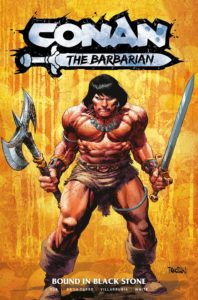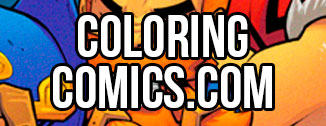
Continuing my Conan reread for Cimmerian September, the twelfth published Conan story is A Witch Shall Be Born, which arrived in the December 1934 issue of Weird Tales magazine.
Our story opens on Taramis, the Queen of Khauran, as she awakens to a shocking revelation- Salome, the twin sister she thought died in childbirth, is alive and in her royal chamber.
It was as if she gazed upon another Taramis, identical with herself in every contour of feature and limb, yet animated by an alien and evil personality. The face of this stranger waif reflected the opposite of every characteristic the countenance of the queen denoted. Lust and mystery sparkled in her scintillant eyes, cruelty lurked in the curl of her full red lips. Each movement of her supple body was subtly suggestive.
Yup, it’s evil twin time and there are almost 2800 words as Taramis fails to figure out Salome’s painfully obvious plan – Bad sister is going to imprison good sister and pretend to be the Queen, kicking off a reign of witch-ful evil. Despite Howard’s efforts to make this opening hit the mark, it’s so slow and trope-laden that the whole thing feels inert right off the starting blocks.
Chapter two moves ahead as a courageous warrior named Valerius (you know, like “valorous”) tells a young woman about the Queen suddenly betraying her people, letting enemy forces in the front gate, and Conan, the Captain of the Guard, boldly stating that she is not who she appears to be:
“He shouted to the guardsmen to stand as they were until they received an order from him—and such is his dominance of his men, that they obeyed in spite of the queen. He strode up to the palace steps and glared at Taramis—and then he roared: ‘This is not the queen! This isn’t Taramis! It’s some devil in masquerade!'”
Which might have been interesting if we didn’t already know that Conan is 100% correct. The problem with this section is that it’s a character telling us exciting stuff that’s already happened instead of experiencing any excitement in the moment. A character relaying past events is a valid storytelling choice, but after that rough opening it once again struggles to generate story momentum.
Finally, after Conan is captured by Constantius, Salome’s new evil general-consort, we cut to the present and the narration fights to get back on track. Conan is dragged out to the desert outside the city walls and crucified, an iconic moment captured in several famous illustrations and reproduced on the “Tree of Woe” in the original Conan the Barbarian movie:
Blood started afresh from the pierced palms as the victim’s mallet-like fists clenched convulsively on the spike-heads. Knots and bunches of muscle started out of the massive arms, and Conan bent his head forward and spat savagely at Constantius’s face. The voivode laughed coolly, wiped the saliva from his gorget and reined his horse about.
“Remember me when the vultures are tearing at your living flesh,” he called mockingly.
Including the infamous “vulture bite”:
Instantly the vulture exploded into squawking, flapping hysteria. Its thrashing wings blinded the man, and its talons ripped his chest. But grimly he hung on, the muscles starting out in lumps on his jaws. And the scavenger’s neckbones crunched between those powerful teeth. With a spasmodic flutter the bird hung limp. Conan let go, spat blood from his mouth. The other vultures, terrified by the fate of their companion, were in full flight to a distant tree, where they perched like black demons in conclave.
Our hero is left to die, but a group of Zuagir tribesmen happen across him, including their leader, Olgerd Vladislav. Olgerd decides to give Conan a chance to live, if he can survive the crucifixion post being cut down with him still on it:
“If it falls forward it will crush him,” objected Djebal. “I can cut it so it will fall backward, but then the shock of the fall may crack his skull and tear loose all his entrails.”
“If he’s worthy to ride with me he’ll survive it,” answered Olgerd imperturbably. “If not, then he doesn’t deserve to live. Cut!”
It’s a nasty bit of business, but dramatic and well done, ending the chapter with intensity as Conan joins the Zuagir.
Unfortunately, chapter three switches back to a passive approach. A scholar named Astreas writes a letter describing the events of the past seven months as “Taramis” rules cruelly and terrifies the populace with her reign of terror. Again, exciting events that could have worked if unveiled in the moment are rendered distant and less engaging.
We find out that Conan has worked his way up to second in command of the Zuagir and they’ve been successful in building up their forces and raiding other settlements. We also find out that Salome now has some kind of monster:
“Taramis, apparently possessed of a demon, stops at nothing. She has abolished the worship of Ishtar, and turned the temple into a shrine of idolatry. She has destroyed the ivory image of the goddess which these eastern Hyborians worship and filled the temple of Ishtar with obscene images of every imaginable sort—gods and goddesses of the night, portrayed in all the salacious and perverse poses and with all the revolting characteristics that a degenerate brain could conceive.”
The rest of the chapter is Salome gloating to the imprisoned Queen Taramis, cutting off the head of one of her allies (who we didn’t know about until this moment), and then Salome tossing that head to a deaf beggar in the streets while talking about her secrets to one of her minions…which is just as sloppy as it sounds.
Chapter four returns us to Conan in the present. Olgerd Vladislav is flush with confidence from his recent success, but Conan turns the tables on him, revealing that he’s secretly built his own loyal force amongst the Zuagir and is ready to take over:
“And what did you tell these outcasts to gain their allegiance?” There was a dangerous ring in Olgerd’s voice.
“I told them that I’d use this horde of desert wolves to help them destroy Constantius and give Khauran back into the hands of its citizens.”
“You fool!” whispered Olgerd. “Do you deem yourself chief already?”
The men were on their feet, facing each other across the ebony board, devil-lights dancing in Olgerd’s cold gray eyes, a grim smile on the Cimmerian’s hard lips.
They fight, Conan easily bests him and, since Olgerd saved his life, our Cimmerian sends him into exile instead of killing him.
Chapter five kicks off with a person, not named, who reveals to a group of rebels meeting in secret that he has discovered that Taramis is a fake because he pretended to be a deaf beggar for months so he could sneak around the palace and find out information. It’s clunky, but now there’s a rebel force ready to fight from inside the city gates and Conan’s Zuagir ready to attack from outside.
Once again, Howard leans away from his strengths as an action-packed active storyteller and tells us about events happening at a distance. Salome gave a crystal ball-like device to a character we’d never heard of before so he can report from the battlefield when Constantius and Conan’s armies clash:
“They have ripped our ranks apart, broken and scattered us! It is a trick of that devil Conan! The siege engines are false—mere frames of palm trunks and painted silk, that fooled our scouts who saw them from afar. A trick to draw us out to our doom! Our warriors flee! Khumbanigash is down—Conan slew him. I do not see Constantius. The Khaurani rage through our milling masses like blood-mad lions, and the desert-men feather us with arrows. I—ahh!”
There was a flicker as of lightning, or trenchant steel, a burst of bright blood—then abruptly the image vanished, like a bursting bubble, and Salome was staring into an empty crystal ball that mirrored only her own furious features.
Chapter six has a pitched battle with Valerius finding and freeing the real Taramis while Conan storms the gates. It’s finally written in the active prose readers expect but, by this point it feels too little, too late. A Witch Shall Be Born may have a really iconic scene, but almost everything else around it feels rushed and unpolished.
I think that, even with the evil twin trope central to the story, a lot of this could be fixed by structuring it so we experience each event as it happens instead of being told about it second-hand. Epistolary writing can be an interesting creative choice, but feels at odds with the action here.
All that said, once again John Buscema’s artwork propels the comic adaptation in Savage Sword of Conan #5 to impressive visual heights, turning a clunker into a near-classic.


If you haven’t read the original Conan prose stories, I recommend the Del Rey 3-book set, which has each story unedited and essays that add context around their publication.








 Zub on Amazon
Zub on Amazon Zub on Instagram
Zub on Instagram Zub on Twitter
Zub on Twitter
0 Comments.